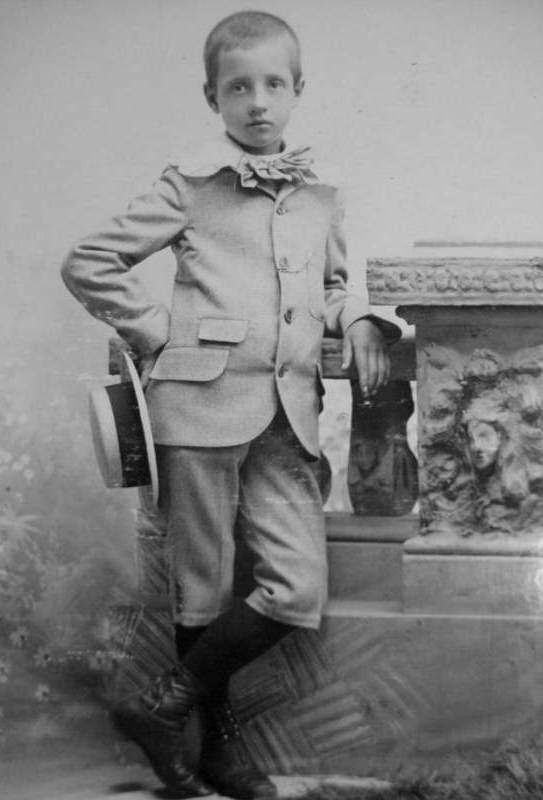
United States Boys' Suits: Seasonality--Fabrics

Figure 1.-- This unidentified American boy was photographed by Shively in Missoula. Montanna. He wears a light-weight summer knee pants suit. The prtrait is undated, but the mount (ivory with an embossed studio logo and gold edge; pinked and beveled) date it to about 1890. He has a large reuffled collar and modest floppy bow. He is holding a boater.
|
|
Suits were done in a wide range of fabrics. This varied chronologically as fabrices changed in popularity. We note quite a range of fabrics in the 19th century. There were fewer types of fabrics in the 20th century, but synthetic polyesters appeared. They were heavy fabrics like cheviot, corduroy, serge, tweed, worsted, and others for winter wear. Some fabrics like Cassimere and flannel could be done in various weights. Other suits were done as seasonal summer suits. These suits were commonly done in lighter-weight material. We note popular summer material like linnen, madras, poplin, polyester, satinet, searsucker, and others. It is difficult to tell from photographs what fabric boys were wearing, although the weight of the material can often be determined. Catalogs do often mention fabrics which provide some unsights into the fabrics used.
HBC

Navigate the Boys' Historical Clothing Web Site:
[Return to the Main U.S. suits seasonality page]
[Return to the Main U.S. suits page]
[Return to the Main suit chronology page]
[Return to the Main Norfolk suit country page]
[Introduction]
[Activities]
[Biographies]
[Chronology]
[Clothing styles]
[Countries]
[Bibliographies]
[Contributions]
[FAQs]
[Glossaries]
[Images]
[Registration]
[Tools]
[Boys' Clothing Home]
Created: 4:19 AM 10/15/2009
Last updated: 4:19 AM 10/15/2009



